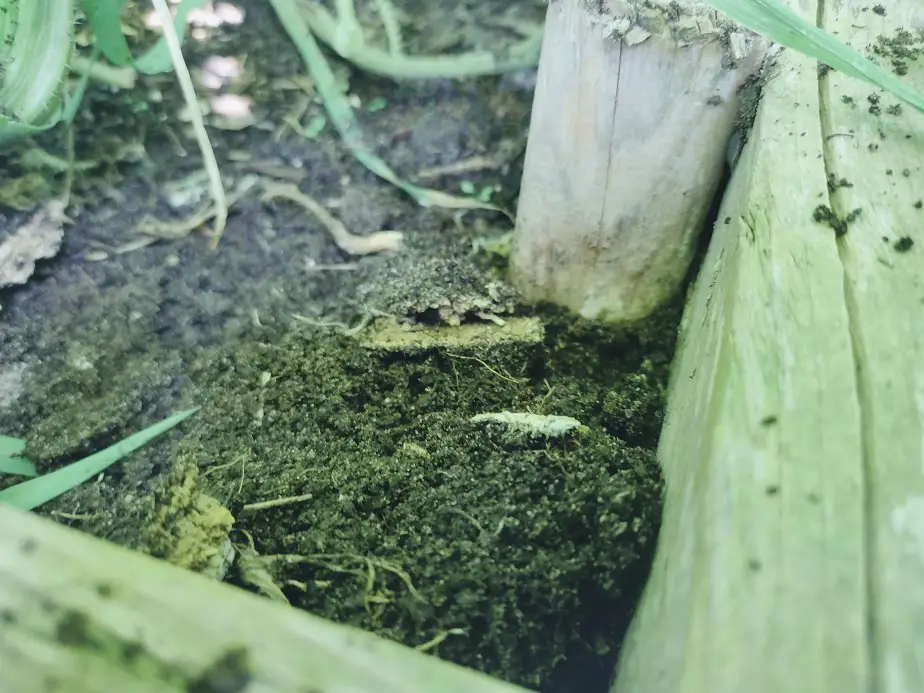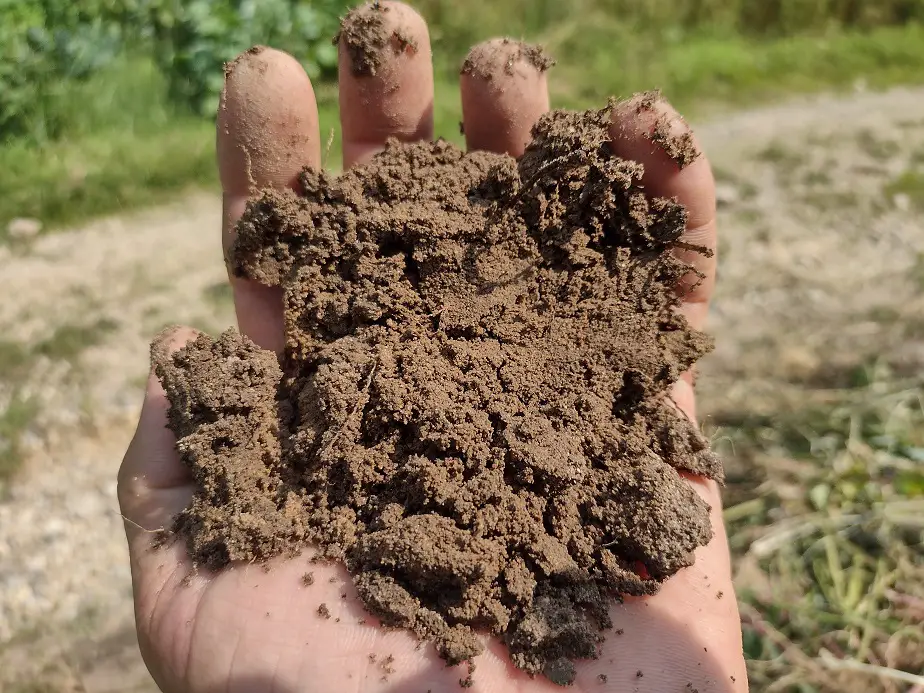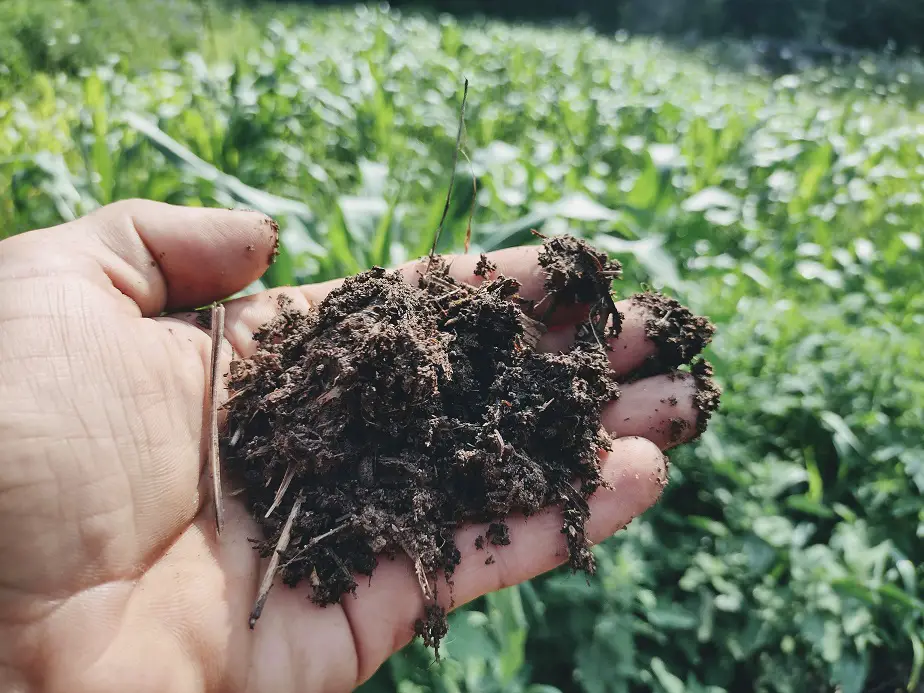I’ve learned that sometimes using the right materials can make a big difference.
Garden soil is slightly cheaper and usually has less organic material and more sand than raised bed soil. Ingredients like perlite and vermiculite are common in raised bed soil but not in garden soil. Raised bed soil needs to hold more water than garden soil because raised beds tend to dry out faster.
Let’s talk about all the differences, and when it’s okay to substitute one for the other.
How Raised Bed Soil Functions Compared to Garden Soil
The primary function of any growing medium is to hold nutrients for the plant, have ample conditions for roots to penetrate, and hold adequate moisture to sustain between rains or watering. If they all have the same concerns, then why are there such big differences? Or are all the products really not all that different?
The answer is that because the growing space conditions are different, the best product will be a bit different. Raised bed soil is different than garden soil for the following reasons.
Raised beds
- Warm up and dry out faster due to sun exposure.
- Drain water faster because they’re elevated.
- Are more practical to achieve perfect soil in.
- Require more concentrated fertility because there’s limited soil.
In-ground gardens
- Loses topsoil to subsoil
- Requires more amendments to make a difference.
- Often drains slowly
- Tends to pool water after rain
- Receives soil moisture from below
- Has nutrients coming in from other areas of the soil
That’s really a pretty good list there. When we look at all those common differences, it’s easy to see why two separate products could be useful to some people.
I wrote an other article comparing different types of bagged soils. Here’s a link to it.
Garden soil is designed to be cheaper than raised bed soil because you might want to use more of it. It’s designed to greatly benefit any garden of any soil type. It loosens clay soil and it enriches sandy soil. It’s a fairly long-lasting type of product, and it’s gonna help fix any soil problem long-term.
It’s important to realize that there isn’t a hard and fast standard to what is a particular soil product. There are generalalities and all name brands sell a very comparable product.
Garden soil is generally very rich in organic matter. It’s usually intended as a sort of supplemental mix to be blended with your native soil. If I had to estimate, I’d say that most mixes I’ve seen are about half organic matter/half sand. Common organic matter includes composted manure and semi-composted forest products (woodchips, leaves, bark).
Even the off-brand stuff I’ve bought looks pretty useful as a soil. In fact, I have used it as potting soil before. It’s not the best and it dries out faster than the good stuff, but bit worked-ish. You can generally get away with using a good garden soil in larger pots, say, 3-5 gallons.
Raised bed soil is designed to hold more fertility, retain more moisture, and promote a better microbiological ecosystem. All the things that are tougher to do in a container space. I consider any raised bed to be a type of container because of the special constraints imposed on the soil within.
It does help if your raised bed doesn’t have a solid bottom. That makes for a better, more fertile, and healthier raised bed. Remember, most garden plants do have roots that can reach 4 feet deep if allowed to. I’m not a fan of raised beds with bottoms.

Ingredients in Raised Bed Soil vs Garden Soil
Common ingredients in garden soil
- Peat moss
- Compost
- Chunky organic material
- Sand
- Fertilizer
Common ingredients in raised bed soil
- Peat moss
- Compost
- Fine organic material
- Sand
- Perlite
- Vermiculite
- Fertilizer
Here’s a link to an in-depth article about raised-bed soil.
To recap, the primary differences are the raised bed soil has more organic matter, and finer organic material and may have more expensive water-holding materials like perlite.

Amending Raised bed Soil
Every year or so, raised beds can be amended with compost, manures, or simply mulched. In healthy soil, mulch breaks down into compost and slowly becomes worked into the soil by microbes, insects, and earthworms. It also releases beneficial nutrients.
You can get too much compost, in some instances. Although I must admit, my only raised bed is filled with pure compost. Basically, in very rare areas, it’s not a good idea. Here, we get pretty good rain, but it’s not a problem. The fact that it’s raised helps it to drain so I can get away with it.
We do use a lot of manures in all our soils. It’s cheap and easy to come by as long as you can haul it. Fortunately, we produce our own now. Rabbit manure is awesomeness for soil.
Beyond that, I’ve been experimenting with biochar as an initial soil amendment. When worked into the soil, a premium biochar product adds instant fertility and soil conditioning and lasts hundreds of years. In the near future, I hope to be selling my own premium, biologically active biochar product through this website.
Raised beds can be fertilized by any means you so choose. I do recommend an organic method or at least a less potent method. Strong fertilizers harm the beneficial microbiology of the soil, and kill off earthworms. If you do apply a strong fertilizer, use multiple applications or water it in really well.

Substitutions for Raised Bed Soil
Raised bed soil can be made by mixing peat moss and compost with your native soil. If you mix peat and compost 50/50, then mix that blend with an equal amount of your native soil, it would probably work well for a raised bed soil. with larger raised beds, you can get away with less organic matter.
If your native soil is very clay, biochar is a great idea to add at around 5 percent of your total volume. That’d be 1 quart of biochar for every 5 gallons of mixed soil. Or, just figure 1 part biochar to 19 parts soil. You could use up to twice that if you thought you needed it.
I would recommend a medium-grit biochar to break up clay. Too big of chunks won’t do much and too fine will just make black clay. The biochar will break up the clay, aerate the soil, and last basically indefinitely.
If your soil is very sandy, I would recommend a heavy dose of compost to enrich it and allow it to hold water. A little biochar will help as long as it’s not an alkaline soil. A simple soil test will tell you that.
Another functional substitution is cheap potting soil with your native soil, mixed 50-50. Most potting soil is peat moss and compost; nice, rich, and fluffy. That’s already the base of raised bed soil. Just add more dirt. Or, try it as is if you’re not in an overly rainy area.
If you ever did see that your soil is drying out too quickly, a layer of some mulch material will really help keep it cool and allow it to retain its moisture. Most experienced gardeners get opinionated and have their own preferred blends, mixes, and amendments. There are a lot of “secret soil recipes” out there.
MIgardener promotes the use of pure compost in raised beds. Sometimes that takes a bit of time to get the fertility balanced out right. If you start out with lesser-quality compost, it soaks up a lot of fertility at first.
Related Articles:

